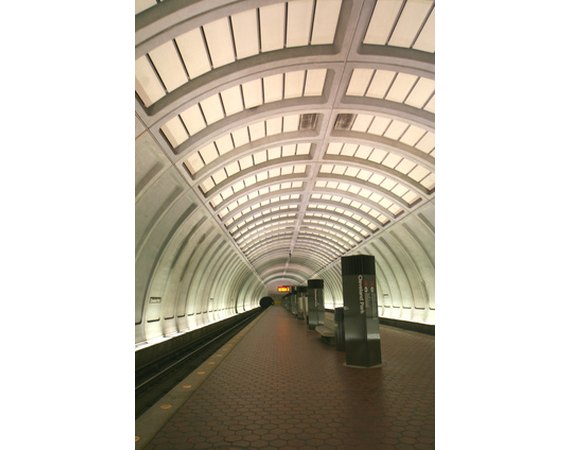
Photography and film both deem it necessary to get the proper amount of lighting. A device called a "Footcandle Meter", commonly referred to as a "Light Meter" can be used to measure the "footcandle" or "lux", the "lumens" and the "candlepower" of a light source. With the knowledge of these key lighting elements, you can adjust your lighting, flash and camera aperture for optimal camera exposure depending whether the subject is predominantly light or dark. Using a light meter can be done with little difficulty.
Instructions
- 1
Set up the area to be illuminated. Create a controlled environment for your light, so you can control the amount of light that gets into your area. External light from sunlight or windows can vary, resulting in unbalanced results. Utilizing your own light sources will ensure that you are in control of how the results turn out.
2Measure for incident light. Any light that falls on the object directly from the light source is "incident" light. Hold the meter in the path of light as close to the subject as possible and measure the distance from the light source. With too much incident lighting, a light subject can easily over saturate a scene, and too little incident light on a dark subject will not show up properly and recess into the background. Most meters will have an option to switch between incident or "spot" lighting and "reflected lighting," and will have an ideal lighting range on the meter.
3Measure for reflected light. This refers to any external light that illuminates an object indirectly. Using the meter as close to the desired subject as possible will give you an accurate reading of both how illuminated a subject is and how light-reflective the subject is. Backdrops with similar color schemes to that of the subject will drown out the subject in too much or too little reflected lighting.

Photography and film both deem it necessary to get the proper amount of lighting. A device called a "Footcandle Meter", commonly referred to as a "Light Meter" can be used to measure the "footcandle" or "lux", the "lumens" and the "candlepower" of a light source. With the knowledge of these key lighting elements, you can adjust your lighting, flash and camera aperture for optimal camera exposure depending whether the subject is predominantly light or dark. Using a light meter can be done with little difficulty.
Instructions
- 1
Set up the area to be illuminated. Create a controlled environment for your light, so you can control the amount of light that gets into your area. External light from sunlight or windows can vary, resulting in unbalanced results. Utilizing your own light sources will ensure that you are in control of how the results turn out.
2Measure for incident light. Any light that falls on the object directly from the light source is "incident" light. Hold the meter in the path of light as close to the subject as possible and measure the distance from the light source. With too much incident lighting, a light subject can easily over saturate a scene, and too little incident light on a dark subject will not show up properly and recess into the background. Most meters will have an option to switch between incident or "spot" lighting and "reflected lighting," and will have an ideal lighting range on the meter.
3Measure for reflected light. This refers to any external light that illuminates an object indirectly. Using the meter as close to the desired subject as possible will give you an accurate reading of both how illuminated a subject is and how light-reflective the subject is. Backdrops with similar color schemes to that of the subject will drown out the subject in too much or too little reflected lighting.
Light Meters 101 When, Why And How To Use A Light Meter
www.apnphotographyschool.com EquipmentControlling the light and mastering the exposure is the mantra for success as a photographer. Understanding the camera's metering is akin to mastering the light...
How to use a Polaris Incident Light Meter - YouTube
www.youtube.com/watch?v=bxfF6BGZ7SAAn overview an demonstration of the Polaris Incident light meter.
Light Measurement, How to Measure Light
physics.tutorvista.com PhotometryA Light meter is a device which is used for the measurement of amount of light. One of the most important uses of light meter is in Photography.
How to Measure Light Intensity: 11 Steps (with Pictures)
www.wikihow.com Lighting and Light SwitchesHow to Measure Light Intensity. Measuring light intensity is important in configuring lighting for a room, movie/television show set, or for taking a photograph. The ...
How do I measure... everything from voltage to the speed of light
www.picotech.com/measure.htmlOur oscilloscopes and data loggers are capable of measuring a large variety of measurements - everything from voltage to the speed of light. Whatever you want to ...
How to calculate color intensity? - AVS Home Theater
www.avsforum.com/t/827747/how-to-calculate-color-intensityThe hue and saturation of color can be measured by the xy points on a CIE chart. However, since this chart does not reflect the intensity of color (Y), what"s the best...
How to measure the Intensity of Light? - Physics Help and Math ...
www.physicsforums.com/showthread.php?t=79235How to measure the Intensity of Light? in General Physics is being discussed at Physics Forums
How to Calculate Light Intensity eHow
www.ehow.com Education K-12 K-12 For StudentsCalculating light intensity at a particular point is a basic lab exercise that students encounter in physics class. This calculation is slightly more difficult than ...
Science - How To Information Page 1 eHow
www.ehow.com Hobbies, Games & Toys Science & NatureDon't just sit there scratching your head, find useful info on Science on eHow. Get essential tips and learn more about everything from How to Calculate Velocity as a ...
How to measure light intensity in a particular place using
stackoverflow.com/questions/6357761/how-to-measure-light-intensity...Stack Overflow is a question and answer site for professional and enthusiast programmers. It's 100% free, no registration required.







